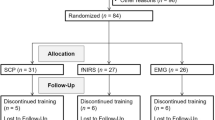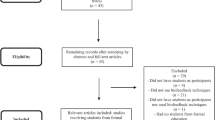Abstract
Ten years ago, the first successful application of a clinical,private-practice based, EEG 14-Hz biofeedback training regimen for the treatment of learning disorders was performed by the author. After the 10-year-old boy, with presenting symptomology including a developmental reading disorder, hyperactivity, and an educational classification of perceptually impaired, continued symptom free for a period oftwo years, his case was submitted for publication. Ten years after his termination from successful treatment, his ongoingly normal social and academic functioning is noted and his EEG brainwave signature examined and compared with a population of 24 “used-to-be” learning disabled, one-half of which had a pretreatment state including the educational classification of perceptually impaired. This 10-year follow-up confirms the long-term stability of the results of this EEG 14-Hz biofeedback regimen. Current findings on recent medical research identifying a major cerebral locus of dysfunction for hyperkinesis and how it supports the electrode placements of this clinical office setting regimen is also discussed.
Similar content being viewed by others
References
Goldberg, G. (1985). Supplementary motor area structure and function: Review and hypotheses.The Behavioral and Brain Sciences, 8 567–615.
Lubar, J. F., & Bahler, W. W. (1976). Behavioral management of epileptic seizures following EEG biofeedback training of the sensorimotor rhythm.Biofeedback and Self-Regulation, 1 47–61.
Shouse, M. N., & Lubar, J. F. (1979). Operant conditioning of EEG rhythms and Ritalin in the treatment of hyperkinesis.Biofeedback and Self-Regulation, 4 299–312.
Tansey, M. A. (1982). EEG sensorimotor biofeedback training and the treatment of a six-year-old asthmatic child.American Journal of Clinical Biofeedback, 5 145–149.
Tansey, M. A., & Bruner, R. L. (1983). EMG and EEG biofeedback training in the treatment of a 10-year old hyperactive boy with a developmental reading disorder.Biofeedback and Self-Regulation, 8 25–37.
Tansey, M. A. (1984). EEG sensorimotor rhythm biofeedback training: Some effects on the neurologic precursors of learning disabilities.International Journal of Psychophysiology, 1 163–177.
Tansey, M. A. (1985a). Brainwave signatures — An index reflective of the brain's functional neuroanatomy: Further findings on the effect of EEG sensorimotor rhythm biofeedback training on the neurologic precursors of learning disabilities.International Journal of Psychophysiology, 3 85–89.
Tansey, M. A. (1985b). The response of a case of petit mal epilepsy to EEG sensorimotor rhythm biofeedback training.International Journal of Psychophysiology, 3 81–84.
Tansey, M. A. (1986). A simple and a complex tic (Giles de la Tourette's Syndrome): Their response to EEG sensorimotor rhythm biofeedback training.International Journal of Psychophysiology, 4 91–97.
Tansey, M. A. (1990). Righting the thythms of reason: EEG biofeedback training as a therapeutic modality in a clinical office setting.Medical Psychotherapy, 3 57–68.
Tansey, M. A. (1991a). Wechsler (WISC-R) changes following treatment of learning disabilities via EEG biofeedback training in a private practice setting.Australian Journal of Psychology, 43 147–153.
Tansey, M. A. (1991b). A neurobiological treatment for migraine: The response of four cases of migraine to EEG biofeedback training.Headache Quarterly: Current Treatment and Research, 90–96.
Zametkin, A. J., Nordahl, T. E., Gross, M., King, A. C., Semple, W. E., Rumsey, J., Hamburger, S., & Cohen, R. S. (1990). Cerebral glucose metabolism in adults with hyperactivity of childhood onset.The New England Journal of Medicine, 323 1361–1366.
Author information
Authors and Affiliations
Rights and permissions
About this article
Cite this article
Tansey, M.A. Ten-year stability of EEG biofeedback results for a hyperactive boy who failed fourth grade perceptually impaired class. Biofeedback and Self-Regulation 18, 33–44 (1993). https://doi.org/10.1007/BF00999512
Issue Date:
DOI: https://doi.org/10.1007/BF00999512




